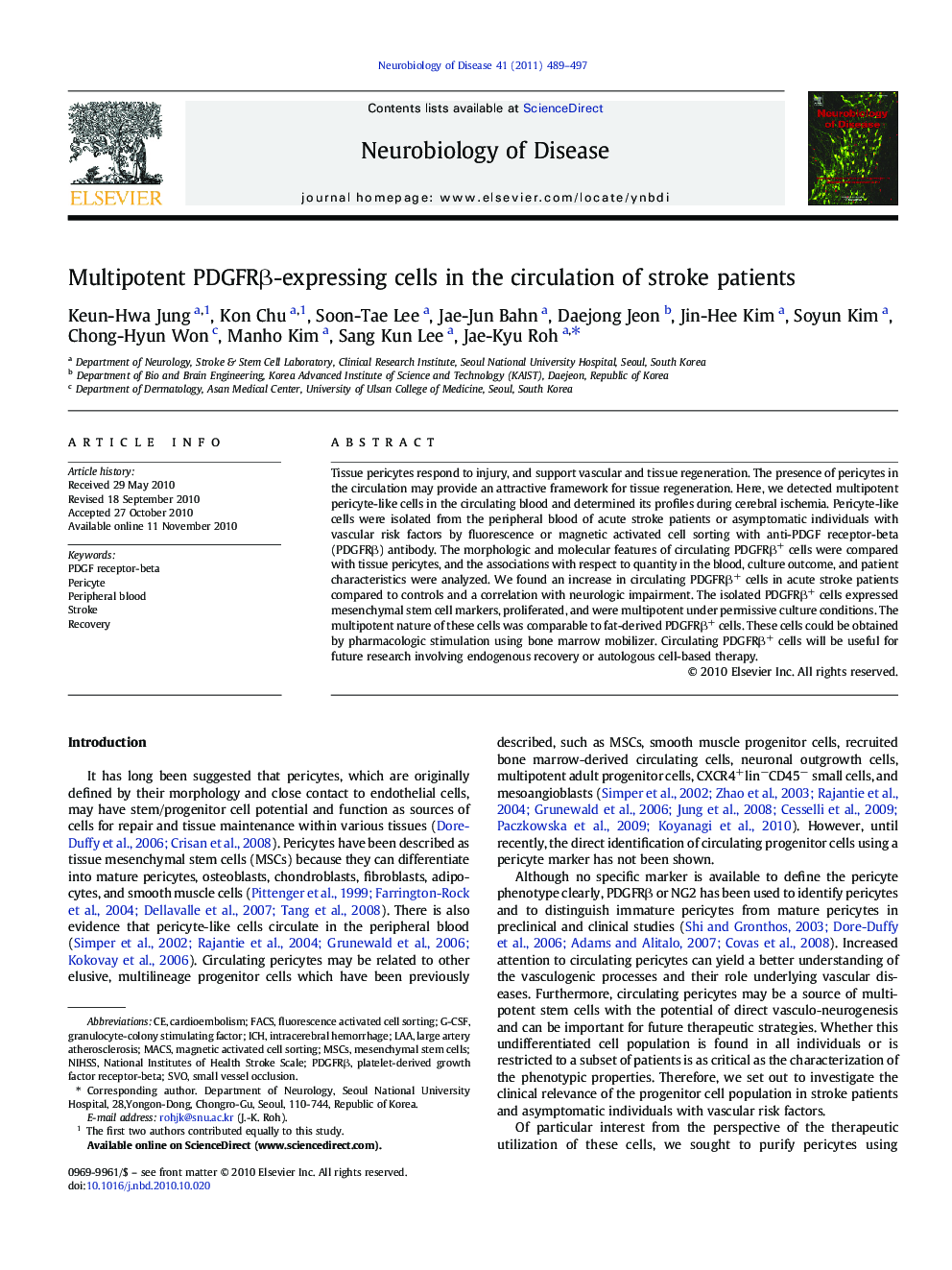| Article ID | Journal | Published Year | Pages | File Type |
|---|---|---|---|---|
| 3069612 | Neurobiology of Disease | 2011 | 9 Pages |
Tissue pericytes respond to injury, and support vascular and tissue regeneration. The presence of pericytes in the circulation may provide an attractive framework for tissue regeneration. Here, we detected multipotent pericyte-like cells in the circulating blood and determined its profiles during cerebral ischemia. Pericyte-like cells were isolated from the peripheral blood of acute stroke patients or asymptomatic individuals with vascular risk factors by fluorescence or magnetic activated cell sorting with anti-PDGF receptor-beta (PDGFRβ) antibody. The morphologic and molecular features of circulating PDGFRβ+ cells were compared with tissue pericytes, and the associations with respect to quantity in the blood, culture outcome, and patient characteristics were analyzed. We found an increase in circulating PDGFRβ+ cells in acute stroke patients compared to controls and a correlation with neurologic impairment. The isolated PDGFRβ+ cells expressed mesenchymal stem cell markers, proliferated, and were multipotent under permissive culture conditions. The multipotent nature of these cells was comparable to fat-derived PDGFRβ+ cells. These cells could be obtained by pharmacologic stimulation using bone marrow mobilizer. Circulating PDGFRβ+ cells will be useful for future research involving endogenous recovery or autologous cell-based therapy.
Research Highlights► Circulating multipotent stem cells can be isolated using a pericyte marker, PDGFR-beta. ► More circulating PDGFR-beta-positive cells were detected from stroke patients with more severe deficits. ► PDGFR-beta-positive cells might be recoverable from stroke patients and might be useful for brain repair.
